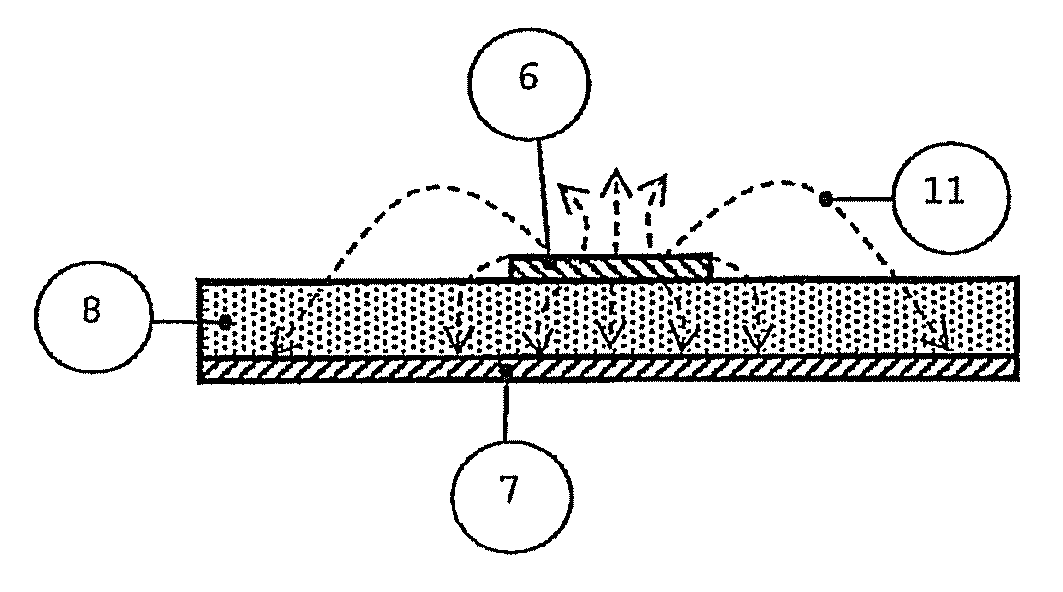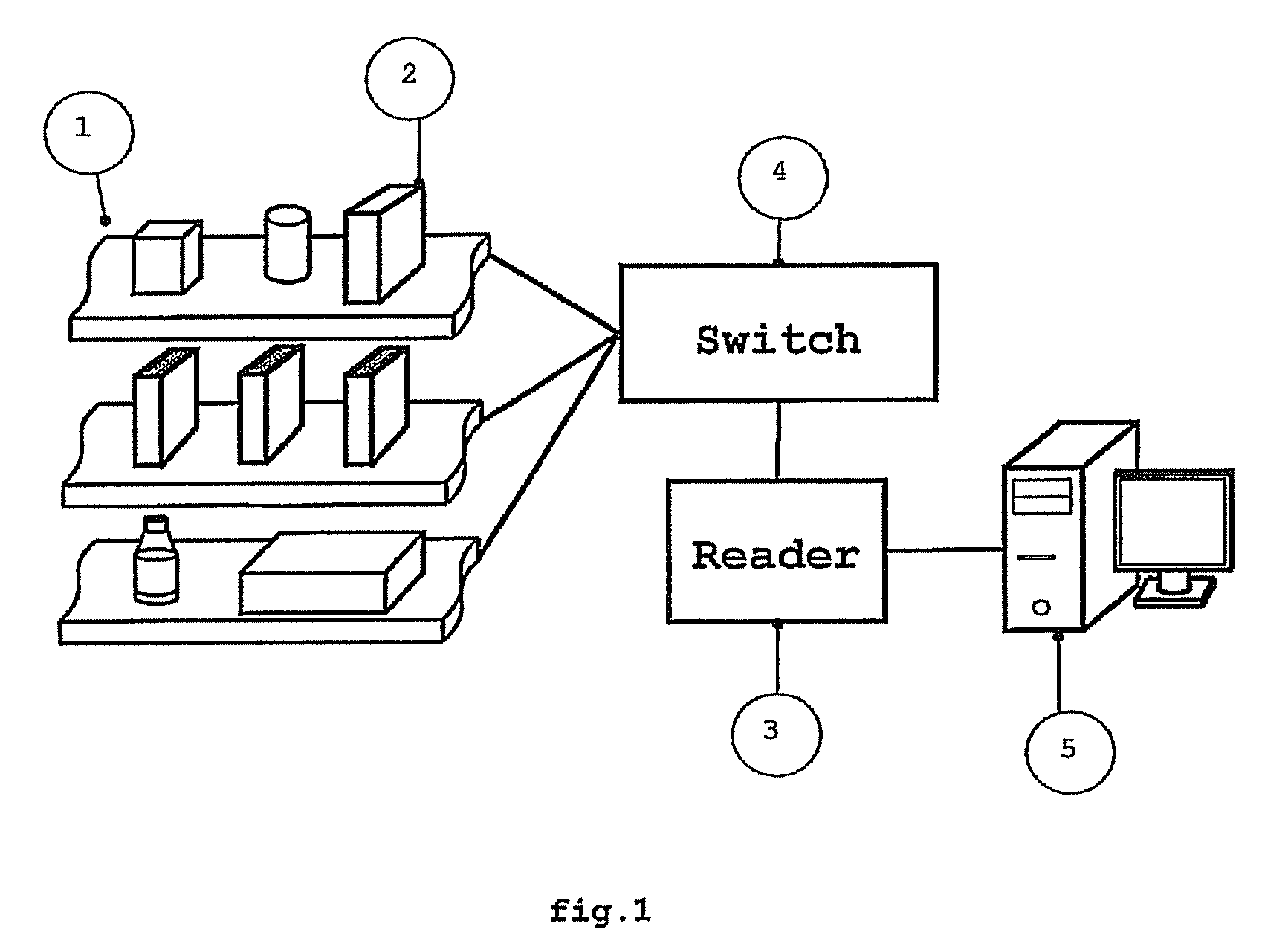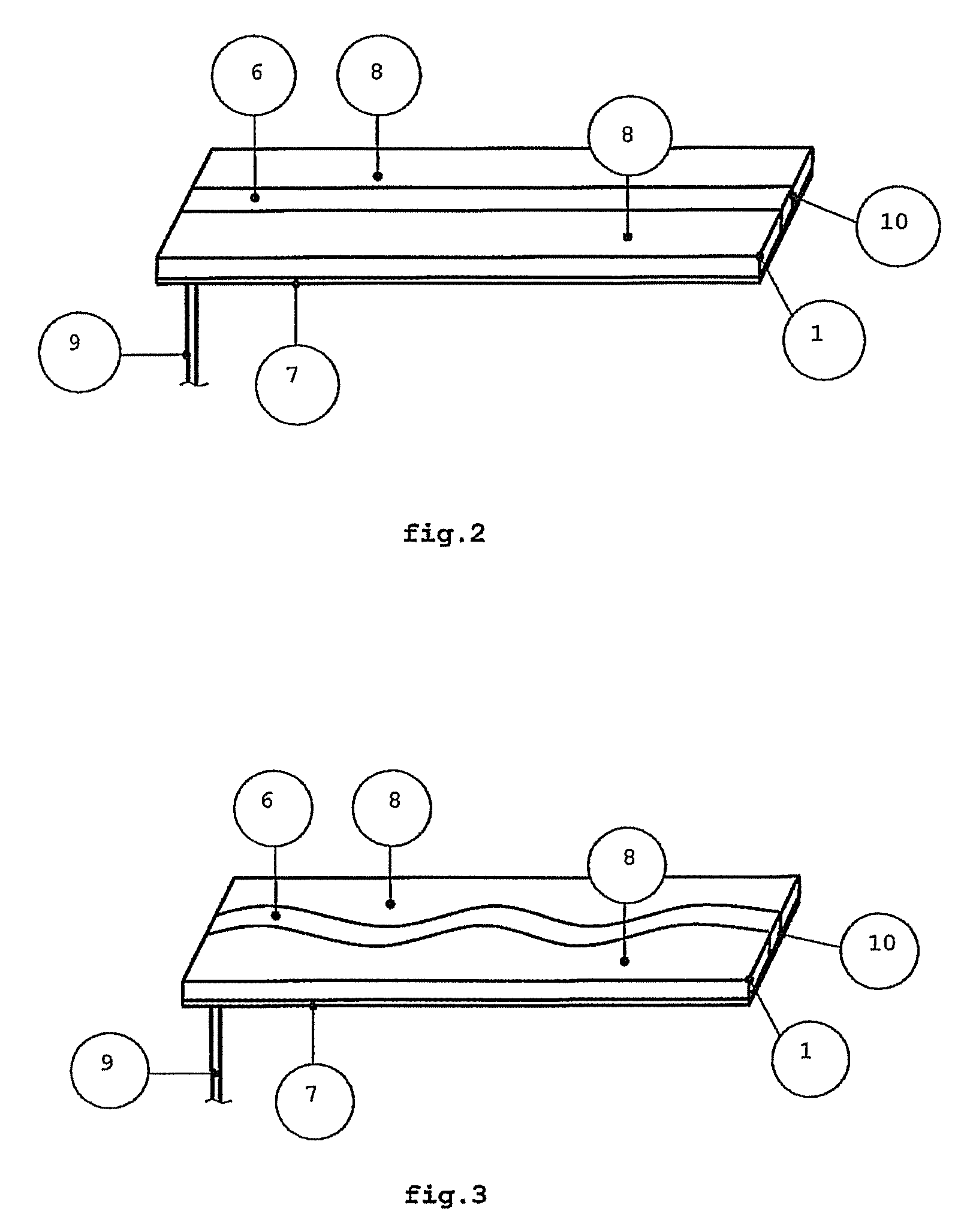Device for reading radio frequency identifiers for volumetric confining of the detection region
a radio frequency identification and volumetric confinement technology, applied in the field of devices for ensuring can solve the problems of additional adapting circuitry, difficult to ensure sectored readings of tagged objects, and inability to ensure the volumetric confinement of the detection region, etc., to achieve easy embedding or attaching, simple manufacturing process, and low inherent cost
- Summary
- Abstract
- Description
- Claims
- Application Information
AI Technical Summary
Benefits of technology
Problems solved by technology
Method used
Image
Examples
example 2
Conveyor Belts
[0046]Another embodiment of the present invention is a conveyor belt. As the meandered curvature of the transmission line 6 in the device 1 is increased, the maximum vertical detection range for RFID tags 13 increases. However, the coverage is reduced in depth in certain areas of the device 1, but the field intensity above the transmission line 6 is similar in all directions. This feature allows the applicability of the invention, for example, in conveyor belts 21 for objects 2 transportation in supermarket payment terminals or warehouses, as shown in FIG. 6. With the movement 20 of the conveyor belt 21, the objects 2 placed above it sweep along the device that is fixed and mounted beneath the rotating belt. For such applications, it is not necessary that the device 1 extends along the entire length of the conveyor belt 21, it is only necessary that the object 2 sweeps through a distance equivalent to a period of the curvilinear line 6, if it is periodic. Thus, detecti...
example 3
Point Readers and Payment Terminals
[0047]A third and fourth embodiments of the present invention are point reader and payment terminals. As previously mentioned, the length of the invention is not a restriction to its implementation and therefore smaller embodiments, similar to the existing terminals for reading bar codes, are foreseen. One example is the RFID point reader 23, arranged in several areas in shops or in payment terminals 22, as shown in FIG. 7a and FIG. 7b, respectively. The choice of the configuration for the transmission line 6 of the device 1 depends on the desired range and on the orientation of the RFID tags 13 on the objects 2 to be identified. The fields volumetric confinement of the device 1 is provided by the transmission lines 6 with total length next or superior to the wavelength at UHF. Unlike optical bar code reader, the RFID point reader 22 and 23 do not require line of sight with the RFID tags 13 and allows simultaneous detection of all products 2 in the...
PUM
 Login to view more
Login to view more Abstract
Description
Claims
Application Information
 Login to view more
Login to view more - R&D Engineer
- R&D Manager
- IP Professional
- Industry Leading Data Capabilities
- Powerful AI technology
- Patent DNA Extraction
Browse by: Latest US Patents, China's latest patents, Technical Efficacy Thesaurus, Application Domain, Technology Topic.
© 2024 PatSnap. All rights reserved.Legal|Privacy policy|Modern Slavery Act Transparency Statement|Sitemap



